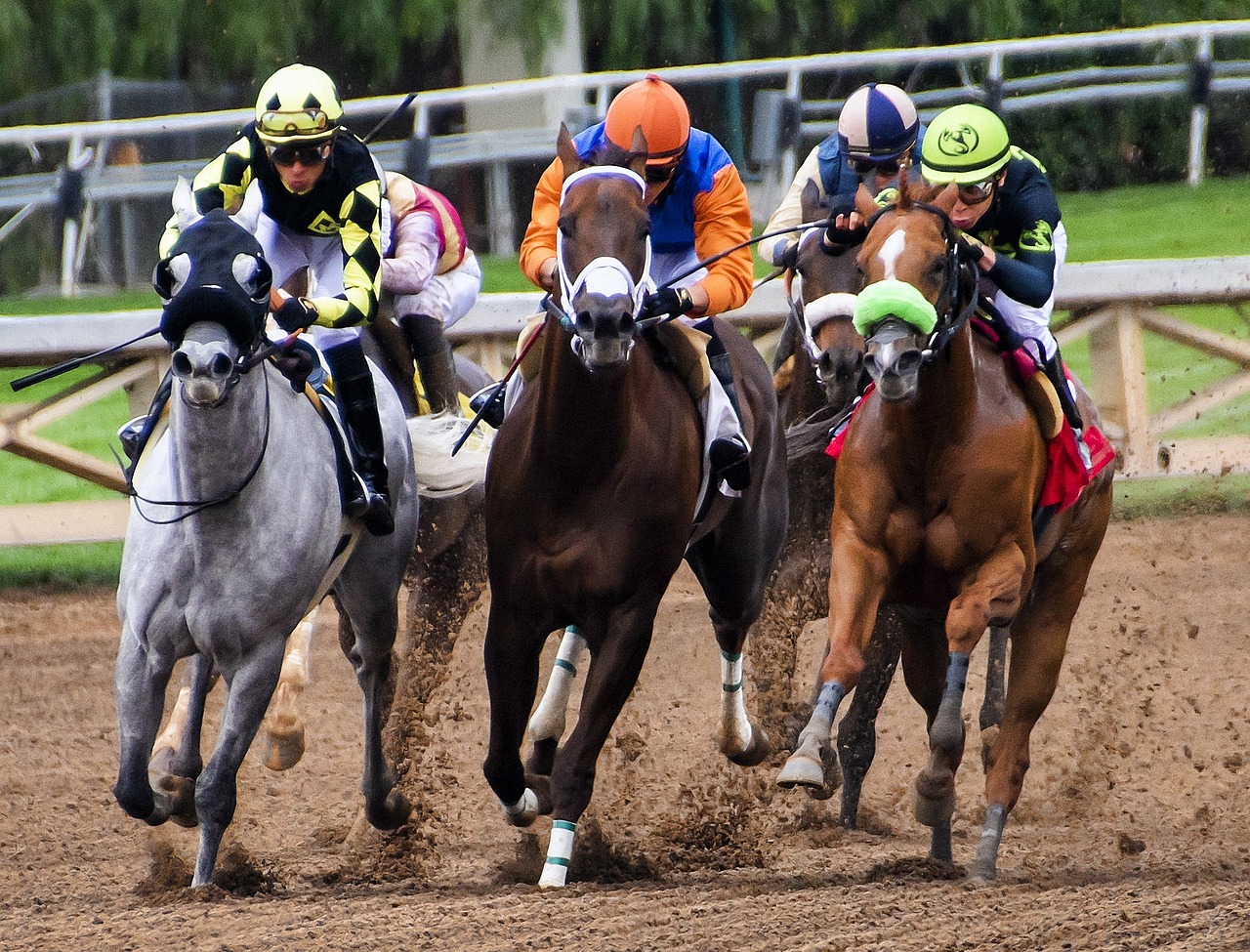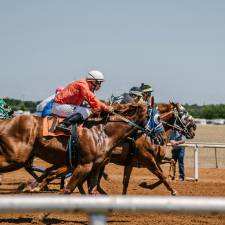
Different horse racing tracks utilize various surfaces—dirt, turf, and synthetic—each of which distinctly influences horse performance. Dirt tracks, composed of materials like clay, sand, and silt, vary due to weather conditions, from fast and firm to muddy and sloppy. Turf tracks, made up of grassy surfaces, change primarily based on moisture levels and maintenance, becoming soft or yielding with rain or hard when dry. Synthetic tracks aim to combine the consistency of turf with greater durability and reduced weather susceptibility.
Weather greatly affects track conditions. Rain can turn a dirt track muddy, making traction harder for horses, while dry conditions make dirt tracks fast. Similarly, turf tracks soften with rain or harden when dry. Excessive rain may cause races to move from turf to dirt tracks to avoid harm to horses and the track.
Horse preferences play an essential role in performance on different surfaces. Factors such as hoof size and running style determine affinities. Some horses perform well on fast dirt tracks but underperform on turf, while others prefer turf or synthetic surfaces. Trainers often select races that align with a horse’s track surface preference, which is crucial information for bettors.
Track Bias and Performance
Track bias, the tendency of a track to favor certain positions or running styles, is influenced by maintenance, weather conditions, and track layout. Recognizing track bias aids in developing a betting strategy, as it can affect race strategy and outcomes. For example, some tracks may favor inside or outside positions or front-runners versus closers. An understanding of these biases is essential for bettors.
Track bias develops due to specific factors. For example, maintenance practices might lead to uneven surfaces, favoring certain lanes or positions. Weather conditions can change track consistency, further emphasizing these biases. Analyzing past races at a particular track helps identify prevailing biases, informing more strategic betting decisions.
Understanding horse preferences and performance on different track surfaces is another fundamental consideration. A horse that consistently performs well on fast dirt tracks might struggle on soft turf. These variations necessitate careful analysis of a horse’s racing history and trainer strategies when placing bets.
Statistical analysis offers further insights into track conditions and their impact on race outcomes. Evaluating historical data on past races, including information on track conditions such as firm, good, or wet, can reveal patterns that affect horse performance. For example, horses that excel on fast tracks often demonstrate superior speed, while those with a record of performing well in muddy conditions are likely to excel on sloppy tracks.
Track Surface Variability and Betting Adjustments
Variations in track surfaces are a key element in horse racing that can directly affect the performance of the betting favorites. Dirt, turf, and synthetic tracks each present unique challenges, and their condition can vary greatly due to weather and maintenance practices. For instance, a dry dirt track offers firm footing, favoring horses with explosive early speed, whereas a wet and sloppy dirt track often benefits horses that can handle deep, shifting surfaces. Similarly, a soft turf track, affected by rainfall, requires more effort from the horses, potentially causing underperformance from those that usually excel on hard surfaces.
These differences in track surfaces make it essential for bettors to adjust their strategies based on the conditions at hand. Using resources such as real-time track updates and platforms like Golden Nugget, which provide various promotional offers and codes, can help bettors adapt their approaches. For example, leveraging a Golden Nugget bonus code may allow a bettor to place a wider range of bets, mitigating the risks associated with unexpected track condition changes. This flexibility can be crucial when track conditions are unpredictable, helping to balance the risk while exploring different betting outcomes.
Horse Performance and Surface Adequacy
A horse’s track record on similar surfaces should be scrutinized. Past performances on specific track conditions serve as pivotal indicators. Horses that consistently perform well on fast dirt tracks are likely to continue this trend under similar conditions. Conversely, a change in track surface may disrupt their usual performance patterns.
Track maintenance quality is another factor impacting track conditions and race predictability. Inconsistently maintained tracks may lead to unpredictable outcomes. For example, a poorly maintained track may develop uneven surfaces, increasing the risk of unexpected results. Regular and thorough maintenance ensures a fair and safe racing environment.
Track conditions can fluctuate during the day, influenced by weather factors. Staying updated on these changes is essential as they can impact race outcomes. Real-time adjustments to betting strategies based on evolving track conditions can enhance the chances of success. Analyzing late market moves also provides insights into where smart money is being placed, reflecting informed betting decisions based on current track conditions.
Injury Risks and Track Surface
Track surfaces correlate with varying injury risks to horses. Hard or uneven surfaces amplify the risk of injuries such as tendon strains or stress fractures. Conversely, excessively soft surfaces can lead to muscle fatigue. The firmness of the track surface influences musculoskeletal injury rates. Horses trained on harder tracks exhibit higher incidences of musculoskeletal lesions compared to those trained on softer tracks.
Recent safety data indicate synthetic surfaces show a lower rate of catastrophic injuries. However, while reducing fatal injuries, synthetic tracks may increase the incidence of career-threatening soft tissue injuries. Continuous evaluation of track surfaces and their impact on horse health is necessary to balance performance and safety considerations.
Proposals to modify surfaces, such as altering sand or clay content, directly impact track composition and safety. Deeper tracks with more cushion generally present safer conditions but may not favor all horses. Historical practices like scraping down tracks to increase speed on racing days exemplify how track modifications can influence fairness and safety.
In conclusion, the performance of betting favorites in horse racing is linked to track surface types and conditions. A deep understanding of these factors, supported by statistical analysis and real-time data, informs more strategic and informed betting decisions. Drawing on historical data and expert insights provides a clear picture of track biases and horse preferences, which is essential for the complexities of horse race betting.
You can find more interesting stories in our section on Racing & Wagering.













